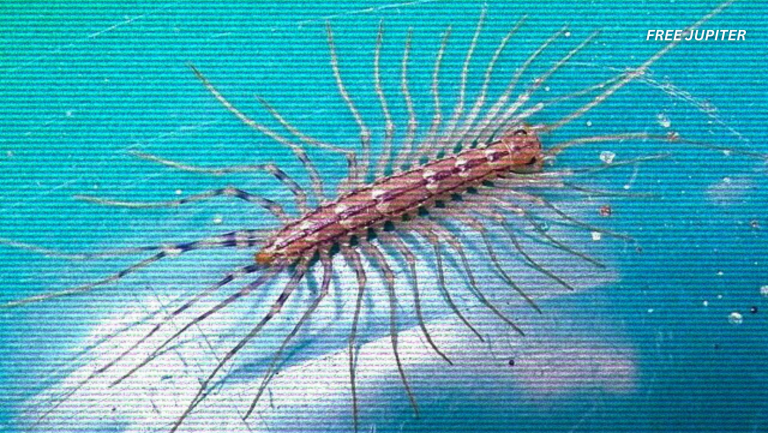For decades, the prevailing theory surrounding the presence of water on Earth has pointed outward—toward the cosmos, and more specifically, toward asteroids. According to this long-held belief, the essential building blocks of water, or even water itself, were thought to have been delivered to our planet through repeated asteroid impacts in its formative years. However, emerging scientific evidence now challenges this narrative. A recent study, published in the journal Icarus, proposes a compelling alternative: that the key chemical ingredients required to create water may have been inherent to Earth’s original material composition, present from the planet’s very beginning.
This new insight is not merely an academic curiosity; it touches on the very roots of life itself. Water, after all, is essential for life as we understand it. And hydrogen, one of its fundamental components, must have been available in sufficient quantities on early Earth for water and subsequently, life to emerge. If hydrogen had always been part of the material that formed Earth, the implications are profound, not just for our understanding of our own world, but for the broader search for life in the universe.
A New Clue from an Ancient Source
In a somewhat ironic twist, researchers turned to a meteorite not to confirm the asteroid-based water delivery theory, but rather to debunk it. The object under scrutiny was a rare enstatite chondrite meteorite—a type that is chemically similar to the material believed to have composed the early Earth some 4.5 billion years ago. The team, based at the University of Oxford, discovered hydrogen embedded in the structure of this meteorite. This revelation carried enormous implications: if such meteorites—representative of Earth’s building blocks—contain hydrogen, then Earth itself could have also possessed ample hydrogen from its inception.
What elevated the importance of this study was the confirmation that the hydrogen found in the meteorite was not a result of contamination after its arrival on Earth. The researchers meticulously verified that the hydrogen was intrinsic to the meteorite itself, not introduced by external sources during its time on our planet. This effectively strengthens the argument that Earth’s formative material was inherently rich in hydrogen, thus reducing the necessity of explaining water’s origins through cosmic collisions.
Read more: How Science Suggests That ‘God’ May Have Created the Universe
A Shift in Scientific Perspective
This finding subtly but significantly shifts the scientific consensus. For years, the concept that hydrated asteroids rained down upon the young Earth, seeding it with the essential elements for water formation, was widely accepted. However, the Oxford team’s discovery leans the balance in favor of a more internally driven origin for Earth’s water.
“The traditional theory relied heavily on external forces bringing water to Earth,” stated James Bryson, a professor at Oxford and co-author of the study. “But if the foundational material of the planet already contained hydrogen, the case for water as an inherent product of planetary formation becomes far more compelling.”
The implication is clear: if water could emerge naturally from the composition of the Earth itself, then other planets with similar origins might also harbor water. This realization broadens the scope for identifying potentially habitable worlds beyond our own solar system.
The Role of Meteorite LAR 12252
The specific meteorite analyzed by the researchers, named LAR 12252, had been originally discovered in Antarctica. Its composition mirrors that of the enstatite chondrite group, known for their chemical resemblance to early Earth. These meteorites are relatively rare, which makes any new analysis both challenging and valuable.
In prior studies, including one conducted by a French research team, traces of hydrogen had been found in both organic and inorganic materials within meteorites. However, it remained unclear whether this hydrogen was a native feature or a product of later terrestrial contamination. Without clarity on this distinction, the findings were left open to multiple interpretations.
To definitively determine the origin of the hydrogen in LAR 12252, the Oxford researchers utilized a powerful analytical method: synchrotron-based X-ray spectroscopy. This technique employs high-energy X-rays to probe deep into the molecular structure of both organic and inorganic matter. By using this approach, the team could visualize precisely where the hydrogen resided within the meteorite.
Read more: Scientist Claims To Have Evidence Our Entire Universe Is Trapped Inside a Black Hole
Unexpected Discoveries in Hydrogen Placement
Initially, the scientists hypothesized that any hydrogen present would likely be associated with sulfur molecules, as these tend to bond readily with hydrogen. They directed the synchrotron beam accordingly. However, the results surprised them: while some hydrogen was indeed located near sulfur-rich areas, the highest concentrations were discovered in crystalline structures situated just outside the expected sulfur zones. These crystals contained hydrogen sulfide, a compound highly unlikely to be the result of modern contamination.
Interestingly, parts of the meteorite that exhibited signs of damage—such as cracks or rust—were devoid of hydrogen. These regions were considered most susceptible to contamination from Earth’s atmosphere and environment. The contrast between hydrogen-rich pristine areas and hydrogen-poor damaged ones further reinforced the conclusion that the hydrogen was original to the meteorite.
“We were incredibly excited when the analysis told us the sample contained hydrogen sulfide — just not where we expected!” said Tom Barrett, a graduate student at Oxford and co-author of the study. “Because the likelihood of this hydrogen sulfide originating from terrestrial contamination is very low, this research provides vital evidence to support the theory that water on Earth is native — that it is a natural outcome of what our planet is made of.”
Rewriting the Story of Earth’s Hydration
This discovery adds new depth to our understanding of Earth’s early development. If enstatite chondrites carried hydrogen and Earth formed from similar material, then hydrogen would have already been locked within the planet before any major asteroid bombardments occurred. By the time Earth was large enough to attract significant impacts, it may have already accumulated enough hydrogen to eventually form the vast reservoirs of water we see today in oceans, lakes, rivers, and even underground aquifers.
The idea that water could be a natural product of planetary formation, rather than a lucky cosmic delivery, also aligns well with models suggesting that early Earth underwent extensive geological and chemical transformations. These processes could have facilitated the combination of hydrogen and oxygen into water without requiring external inputs.
Read more: Welcome To Starbathing: The Next Big Thing In Travel
Broader Implications for Planetary Science
Although the findings do not conclusively end the debate over how Earth obtained its water, they do tilt the conversation in favor of internal origins. If hydrogen was present in significant amounts in the material that coalesced into Earth, then similar processes may have occurred on other rocky planets in the universe.
This discovery also adds weight to theories proposing that the conditions necessary for water—and therefore life—may be more common throughout the cosmos than previously thought. If water is a natural byproduct of planetary formation, then it could be far more widespread, raising intriguing possibilities for life elsewhere.
A Natural Outcome, Not a Cosmic Fluke
Professor Bryson emphasized the transformative nature of the team’s findings, noting, “We now think that the material that built our planet which we can study using these rare meteorites was far richer in hydrogen than we thought previously. This finding supports the idea that the formation of water on Earth was a natural process, rather than a fluke of hydrated asteroids bombarding our planet after it formed.”
In light of this research, the origins of water on Earth appear to be more intricately tied to the planet’s birth rather than to a chance encounter with space rocks. The very dust and stone that coalesced to form our world seem to have carried within them the potential for life—a potential realized through the presence of water, created not from the heavens, but from the Earth itself.









